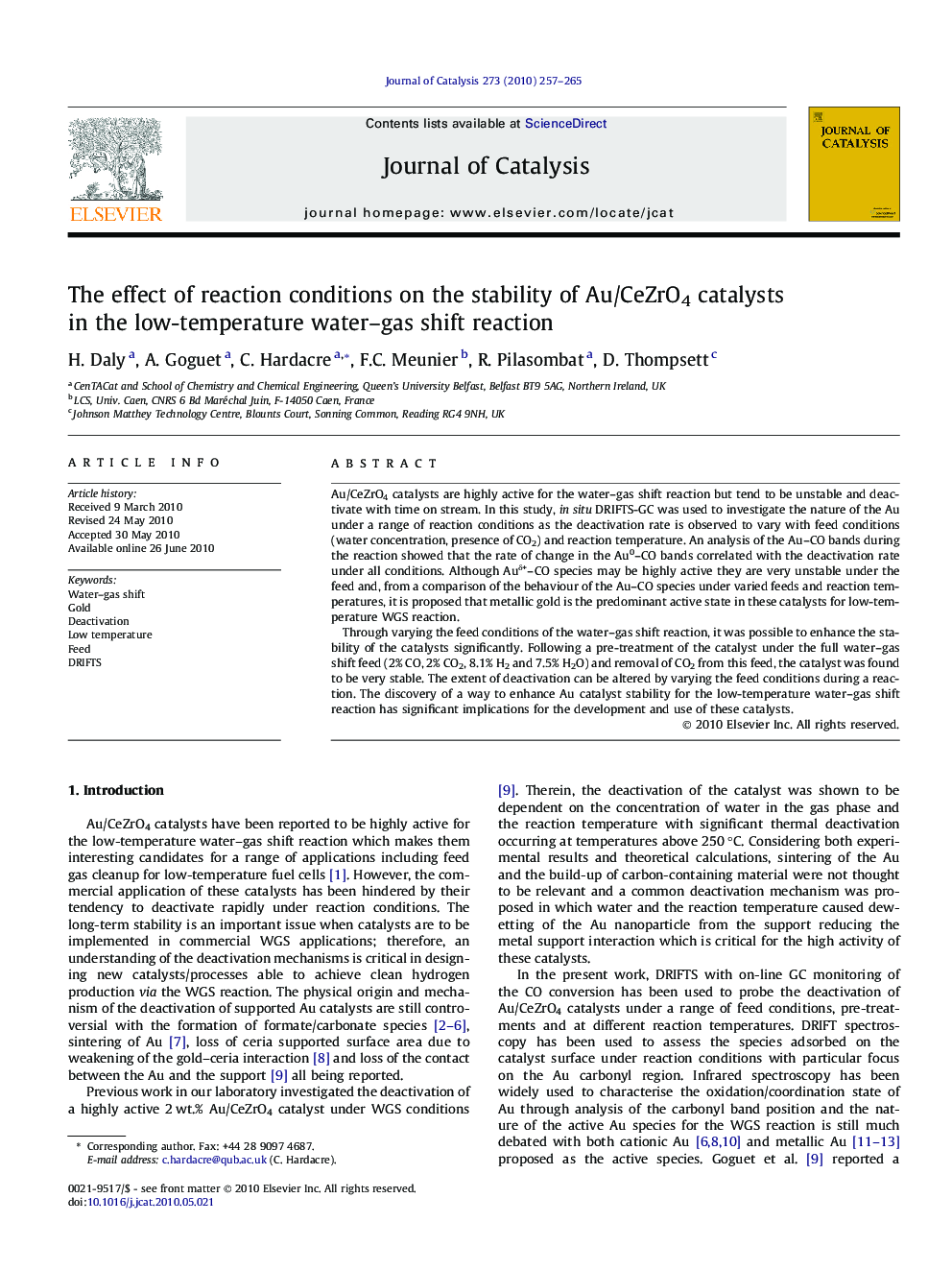| Article ID | Journal | Published Year | Pages | File Type |
|---|---|---|---|---|
| 62090 | Journal of Catalysis | 2010 | 9 Pages |
Au/CeZrO4 catalysts are highly active for the water–gas shift reaction but tend to be unstable and deactivate with time on stream. In this study, in situ DRIFTS-GC was used to investigate the nature of the Au under a range of reaction conditions as the deactivation rate is observed to vary with feed conditions (water concentration, presence of CO2) and reaction temperature. An analysis of the Au–CO bands during the reaction showed that the rate of change in the Au0–CO bands correlated with the deactivation rate under all conditions. Although Auδ+–CO species may be highly active they are very unstable under the feed and, from a comparison of the behaviour of the Au–CO species under varied feeds and reaction temperatures, it is proposed that metallic gold is the predominant active state in these catalysts for low-temperature WGS reaction.Through varying the feed conditions of the water–gas shift reaction, it was possible to enhance the stability of the catalysts significantly. Following a pre-treatment of the catalyst under the full water–gas shift feed (2% CO, 2% CO2, 8.1% H2 and 7.5% H2O) and removal of CO2 from this feed, the catalyst was found to be very stable. The extent of deactivation can be altered by varying the feed conditions during a reaction. The discovery of a way to enhance Au catalyst stability for the low-temperature water–gas shift reaction has significant implications for the development and use of these catalysts.
Graphical abstractThe predominant active state in Au/CeZrO4 catalysts for low-temperature water gas shift is thought to be Au(0) and, through varying the reaction feed conditions, it was possible to enhance the stability of the catalysts significantly.Figure optionsDownload full-size imageDownload high-quality image (45 K)Download as PowerPoint slide
